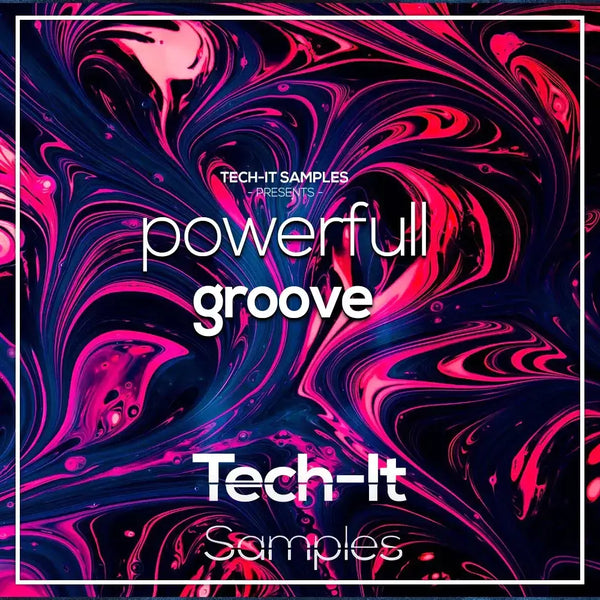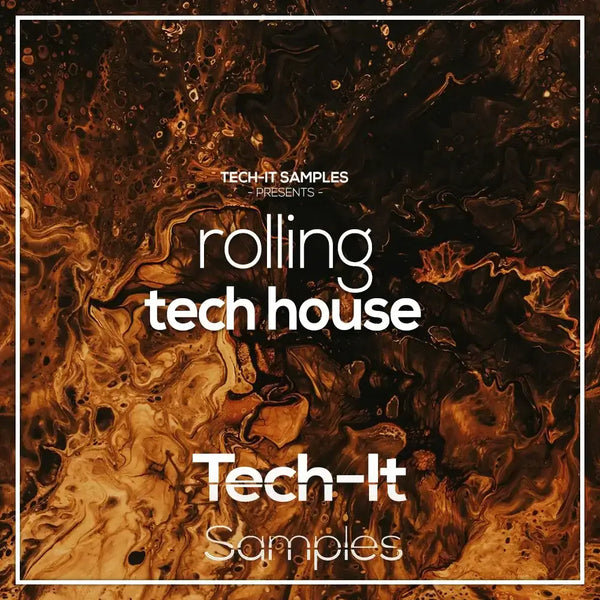10 TIPS on How to Finish Songs Faster (Music Producer Tips)
1. Aim for Quantity over quality
Recent music production trends suggest that it is no longer enough for music producers to focus solely on quality. Instead, many music producers are now aiming for higher quantity when producing music. This shift towards producing a greater quantity of music is largely due to the need for music producers to remain competitive in today’s market.
With the massive amounts of music being produced each day, it is becoming increasingly difficult for music producers to stand out among the competition and be successful. By aiming for greater quantity rather than just quality, music producers can ensure that their music is seen and heard by as many people as possible.
Producing more music also gives music producers the opportunity to experiment and push the boundaries of their craft. By creating multiple different tracks, music producers can find what works best for them, and what resonates the most with their audience. This can lead to new and innovative sounds, as well as the development of unique musical styles.
Having a greater quantity of music also allows music producers to explore different musical genres. This can be beneficial for music producers who want to expand their repertoire and reach a wider audience. By having a variety of genres to work with, music producers can create something for everyone and become more successful in the long run.
Ultimately, it is important for music producers to remember that quantity does not always equal quality. It is still important for music producers to focus on creating quality music, but the key is to try and produce as much music as possible. By aiming for a greater quantity of music, music producers can ensure that they remain competitive and relevant in today’s music market.
2. Use Reference Tracks
As a music producer, it is essential to make sure that the music you create is of the highest quality. One of the best ways to make sure that your music is top-notch is to use reference tracks in your production process. Reference tracks can help you to get a better understanding of the direction you should be taking with your own music and to ensure that it meets the standard that you have set.
In order to use reference tracks effectively, you should first determine the genre and style that you want to make. Once you have selected the genre and style, you can then browse through your library of songs to find a track that is similar to the one you are producing. This will give you a reference point to use when you are starting your own production.
In addition to genre and style, you should also consider the tempo of the track. You can adjust your own tempo to match the reference track, or you can use the reference track as a guide to ensure that your own track stays on the same tempo. Paying attention to details such as this can help you to produce a better-sounding track.
When you are in the recording process, you should also compare the sound of your own track to the reference track. This way, you can make any necessary adjustments to the sound so that it meets the standard that you have set. You can also use reference tracks to gain inspiration and get a better understanding of the production process.
Finally, you should use reference tracks as a way to troubleshoot if you run into any issues. By referencing a commercial track, you can quickly identify any potential problems in your own track. This can save you a considerable amount of time and money in the long run.
Using reference tracks is an excellent way for music producers to ensure that their work is of the highest quality. By taking the time to select the right reference track and to pay attention to the details of the recording process, you can easily produce a professional track.
3. Separate production and mixing session
As a music producer, it is important to understand the differences between production and mixing sessions. Production sessions are where you take a song from a concept to a full-fledged arrangement. This process often involves composing, playing instruments, and recording. On the other hand, mixing sessions are where you take the recorded material from the production sessions and mix it together to create the final product.
Producing a song typically consists of several steps. First, you will need to choose the right sounds and instruments to create the desired sound. This involves selecting the right samples and synthesizers, as well as recording the live instruments. It is important to ensure that the instruments are in tune, as this will affect the sound of the final product. Once the instruments have been selected, you will then need to arrange them in a way that makes musical sense. This involves creating the proper soundscape and crafting the song's structure.
Mixing is the process of taking the individual sounds and bringing them together. This involves balancing the levels, adding effects, and ensuring that the instruments are properly panned. It is important to make sure that the overall balance of the mix is correct, as this will affect the sound of the final product. It is also important to ensure that the overall mix is loud enough, but not too loud.
Separating production and mixing sessions is important for achieving the desired sound. Production sessions are where you create the sounds and arrange them, and mixing sessions are where you bring everything together. By separating the two processes, you can ensure that the sounds you create in the production sessions are properly balanced and mixed in the mixing sessions. This will result in a more professional sound that can be appreciated by your audience.
The key to successful production and mixing sessions is organization and preparation. When producing a song, it is important to plan ahead and have a clear understanding of what needs to be done. This will help you stay on track and ensure that the song is completed in a timely manner. When mixing, it is important to have patience and a good understanding of the equipment being used. This will ensure that the mixing process is done correctly, resulting in a professional sounding product.
By separating production and mixing sessions, music producers can ensure that their songs have the desired sound and clarity. This will help them create a professional sounding product that can be appreciated by their audience. With the right tools and knowledge, producers can take their music from concept to a full-fledged arrangement and create a truly memorable listening experience.
4. Don’t be afraid to overproduce
Are you a music producer looking for a way to take your productions to the next level? Don’t be afraid to overproduce!
Music production is all about taking your music from an idea in your head and turning it into a professional-sounding track. This requires a lot of creativity, skill, and experimentation; so don’t be afraid to take your time and add more elements to the track. Good producers know how to create a song that is more than just a collection of sounds, but instead tells a story through its arrangement and sound design.
When it comes to production, don’t be afraid to overproduce. That can mean adding more layers, textures, and effects to the track. This can help to give it more depth and bring life to the song. You can also use different elements to highlight certain parts of the song, or give it more of an emotional impact.
The key is not to overproduce to the point where the song becomes cluttered or disorganized. You still want to be able to hear each element, and it should all work together to create one cohesive song.
Another great way to overproduce is to use automation. Automation is when you use technology to automate certain elements of the track, such as volume, panning, and effects. This can give the track more movement and make it sound more professional.
Finally, don’t be afraid to experiment and try new things. You never know what you’ll come up with, and it can be a great way to develop your own personal production style.
So don’t be afraid to overproduce. It can be a great way to take your music production to the next level and create something truly unique and special.
5. Reuse sounds from old project
As a music producer, you know that the success of your project depends on the sounds you use. With the ever-growing array of plugins, software and sample packs, it can be hard to find the right sound for the right track.
However, what if there was another way? What if you could easily reuse sounds from old projects?
Reusing sounds from old projects is a great way for music producers to save time and money. Not only can you save money on buying new sample packs, but you can also save time by not having to search for the sound you need. Plus, you can use sounds that you already know work well with your style.
But how do you go about reusing sounds from old projects? Fortunately, there are some easy ways to do it.
You can look through your own collection of projects. You may have some samples or loops that you can use from the project. You can also look through other musician’s projects to see if they have any sounds you can use.
6. Build daw templates
As a music producer, having access to quality production templates can make all the difference in creating a hit song. Templates provide a foundation to build from, allowing producers to quickly and easily craft the perfect song.
Whether you’re a pro or an amateur, having the right tools to create your music is incredibly important. For producers looking to build their own Digital Audio Workstation (DAW) templates, there are plenty of options available to get the job done.
For some, the best option is to create their own templates. With the right software and sounds, producers can build their own custom templates tailored to their individual needs. Popular DAWs such as FL Studio, Ableton, and Logic Pro X all have the ability to create templates.
For others, pre-made templates have tremendous benefits. These templates are created by professional producers and can be used to quickly create high-quality tracks. For those looking for professional templates, there is a plethora of options available, from EDM to tech house, techno, future rave and slap house
For producers looking for tech house templates specifically, there are plenty of options available. From classic tech house vibes to modern deep house sounds, producers can find the perfect template for their track.
No matter what type of music producer you are, having access to high-quality production templates can make all the difference in creating an amazing track. Whether you’re looking to create your own or prefer to use pre-made templates, there are plenty of options available to get the job done.
Ableton TemplatesFL STUDIO Template
7. Place automations on bus groups
As a music producer, it is important to stay on top of the latest trends in the industry. In order to stay ahead of the competition, you need to stay up to date on the latest music production techniques and technologies. One of the best ways to stay on top of the trends is to place automations on bus groups.
Bus groups are a great way to increase the efficiency of your music production. They allow you to place multiple effects on a single track, allowing you to mix and master with ease. Placing automations on bus groups is especially useful when you are working on a large project, such as an album or an EP. By placing automations on your bus groups, you can quickly adjust the volume and EQ levels of multiple tracks at once. This makes it easier to make sure the overall sound of your tracks is consistent across the entire project.
When placing automations on bus groups, you can use multiple parameters to make sure you get the desired sound. For example, you can set the volume of each bus group, allowing you to mix and master your tracks with ease. You can also set the EQ levels, allowing you to fine-tune the frequency of different tracks. You can also add reverb, delay, and other effects to your bus groups to give your tracks a more professional sound.
Placing automations on bus groups is an important part of the music production process, and it can help you get the most out of your music. By automating your bus groups, you can quickly make adjustments to your mix and master without having to manually adjust each track. This will save you time and energy, allowing you to focus more on the creative side of your music.
If you’re a music producer, then placing automations on bus groups is an essential part of your workflow. Automating your bus groups will make it easier to make sure the overall sound of your tracks is consistent across the entire project. It will also save you time and energy, allowing you to focus more on the creative side of your music. By placing automations on bus groups, you can quickly and easily adjust the volume and EQ levels of multiple tracks at once, making sure you get the desired sound.
8. Start mixing from top
Being a successful music producer requires a great deal of skill and knowledge. It requires a good understanding of music theory, composition and the technical aspects of sound engineering and production. Aspiring music producers must have the patience and dedication to learn the craft, as well as the creativity to create unique sounds and styles.
Start mixing from the top is an important concept for aspiring music producers to consider. It is a technique that involves starting out with the higher frequency elements of a track first, such as the high strings or percussion parts. This allows the producer to create a solid foundation for their track, as well as creating an interesting and unique sound.
The next step for producers is to move down to the lower frequency elements of the track. This includes the mid-range and bass elements, such as bass guitars and drums. By creating a strong foundation with the higher frequency elements and then adding the lower frequency elements to the mix, producers are able to create a more full sound.
It is important for music producers to pay attention to the frequency balance of their mix. This means that the higher elements should not overpower the lower elements and that the overall mix should have a good balance between the various frequencies. When the mix is too unbalanced, it can result in a muddy or distorted sound.
The last step in the process of mixing from the top is to add in the effects. This is where producers can get creative and add a variety of effects to their track. Effects such as reverb, delay, flange, chorus and phaser are all great tools for creating unique and interesting sounds.
Start mixing from the top is an important concept for aspiring music producers to consider. It is a great way to create a strong foundation for their track, as well as create interesting and unique sounds. By mastering the techniques of mixing from the top, music producers can create professional-sounding tracks and take their production to the next level.
9. Take breaks
As a music producer, taking regular breaks is essential for maintaining a healthy work-life balance and avoiding burnout. Whether it’s a 15-minute break to get some fresh air, a mini-vacation to recharge, or a few days off to relax and unwind, taking breaks can help you stay productive and creative.
Regular breaks provide an opportunity to take a step back, relax, and unplug from the hustle and bustle of the music production process. Breaks give you the opportunity to clear your head and come back to your music with a fresh perspective. Taking regular breaks can also help you to become more creative, as you'll have more time to think outside the box and come up with new ideas.
Not only can regular breaks help with your productivity and creativity, but taking time away from work can also help you to stay healthy and reduce stress. Taking breaks will allow you to get some fresh air, exercise, and even take a nap, helping you to feel more energized and productive. Also, taking breaks gives you the opportunity to spend time with family and friends, providing you with an emotional and mental reset.
Although it can be difficult to make time for breaks when you’re busy, it is important to prioritize them in order to stay productive and creative. Here are some tips to help you make time for taking breaks:
- Plan ahead: Make sure to schedule regular breaks in your day or week so you can prioritize them and make them a priority.
- Set boundaries: Make sure to set boundaries between work and leisure time. This way, you’ll be able to fully disconnect when it’s time for a break.
- Prioritize: Prioritize your breaks, so that you’re taking breaks when you need them instead of when you get the chance.
- Have fun: Don’t forget to make your breaks fun! Make sure to do something that recharges and refreshes you, whether it’s going for a walk, listening to music, or playing video games.
Taking regular breaks is an essential part of being a productive and creative music producer. Make sure to prioritize your breaks and make time for them so you can stay productive and creative.
10. Do each part separately
Part 1: Introducing Groove, Bass and Synths
Groove is the most important element to a song. It’s the rhythm that sets the pace and gets people moving. The bass and synths are then added to give the song more body and provide a backdrop for the vocals to shine. Depending on the genre of music you’re producing, you might opt for a heavier or lighter groove.
Bass and synths create a foundation for the song. Bass lines can be used to add a layer of complexity to a song, while synths can provide the sparkle and colour of the song. When used in combination with the vocals and other instruments, these elements can really bring a song to life.
Part 2: Crafting Intros and Outros for Your Tracks
A great song starts with an intro and ends with an outro. How you craft these sections of your track can have a huge impact on its overall sound. It’s important to think about how you want your track to start and end, so that you can create the perfect beginning and end to your track.
For a track’s intro, you should consider what kind of mood you want to set. You can use a combination of instruments and effects to build up a tension before the vocals kick in. This can help to set the tone of the track and get your listeners ready for what’s coming.
The outro is equally important. Here you can add some drama to your track by fading out the instruments and vocals before bringing in a final flourish. This can be a great way to give your track energy and create an impactful ending.
Part 3: Mixing and Mastering Your Tracks
Once you’ve created your track and crafted the perfect intros and outros, it’s time to move onto the mixing and mastering stages. Mixing is the process of balancing all the elements of your track and making sure that everything is audible and sits well together. Mastering is then used to give your track the final polish.
Mixing can be a difficult and time-consuming process, but it’s essential to getting a professional-sounding track. It’s important to make sure that all the elements of your track are audible and that they all sit together nicely. You should also make sure that the vocals are the focus of your track, as they’re what your listeners will be paying most attention to.
Mastering then takes things a step further and gives your track the final polish. It can be used to make subtle adjustments to the sound of your track and make sure that it’s ready for release.
Conclusion
Creating great music is all about the groove, bass and synths. These elements, combined with intros and outros, can create an incredibly powerful sound. Mixing and mastering your track will then give it the final polish and make sure that it’s ready for release. So, make sure you take the time to get the groove, bass and synths right, and you’ll be sure to create amazing music.










